
The Böögg, Switzerland’s exploding psychic snowman

The quicker the Böögg’s dynamite-packed head explodes, the hotter the summer. That’s the theory. But where did the tradition come from, and – more importantly – how accurate is it?
Every year, at 6pm on a Monday in April (this year it’s April 28), a cotton-wool snowman is set on fire on Zurich’s Sechseläutenplatz. But not just any snowman. This is the Böögg (pronounced “berk”), the headline-grabbing highlight of the Sechseläuten, a traditional spring holiday in Zurich.
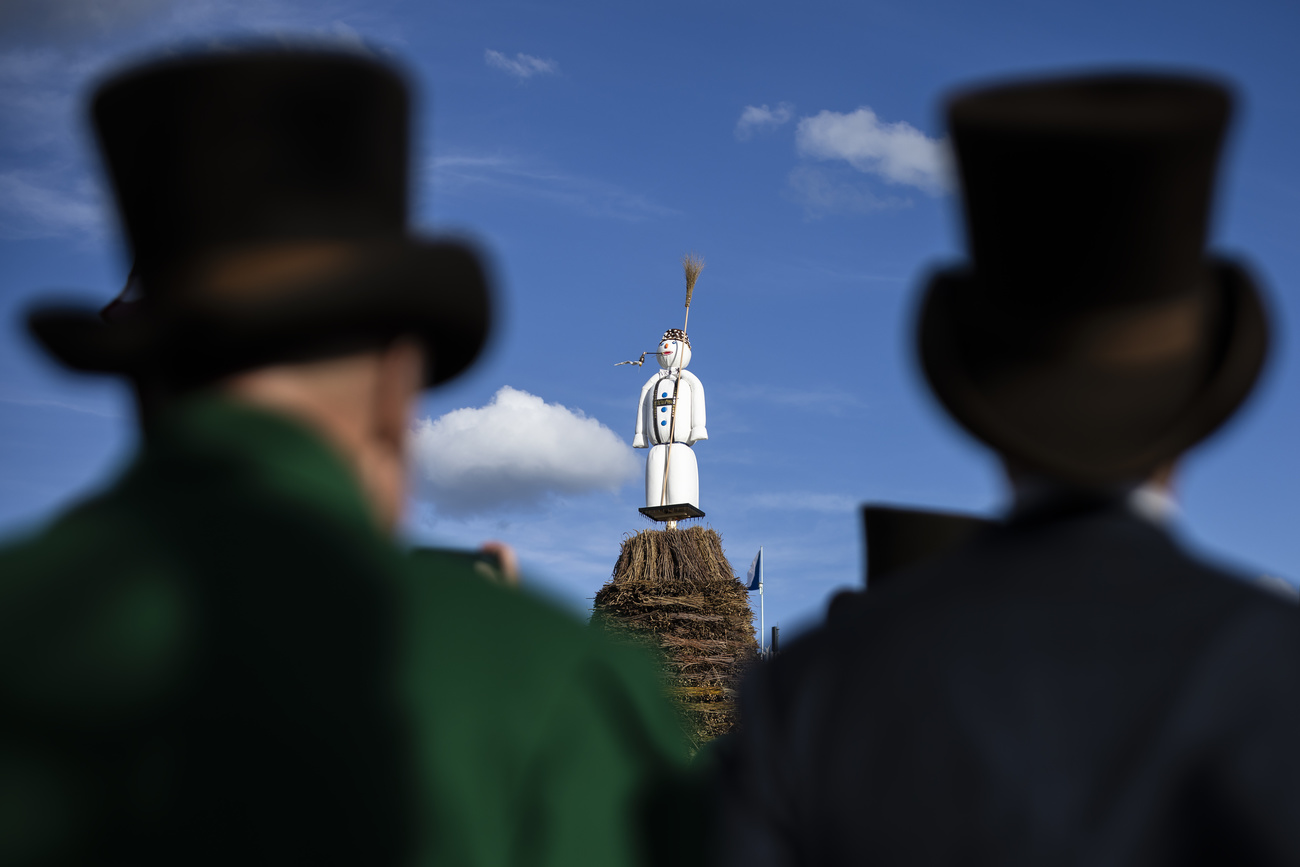
Sechseläuten, which means the “six o’clock ringing of the bells”, has various roots. On the one hand it’s based on fire customs linked to the spring equinox, during which boys burnt self-made straw effigies with scary masks – “Bööggen”, linked etymologically to the bogeyman – around the city. On the other, members of guilds used to regulate working hours by ringing bells; in winter, craftsmen and traders would work until 5pm and in summer until 6pm.
In 1892 both traditions merged, and since 1902 burning a snowman, representing winter, has been a fixed part of the Sechseläuten custom.
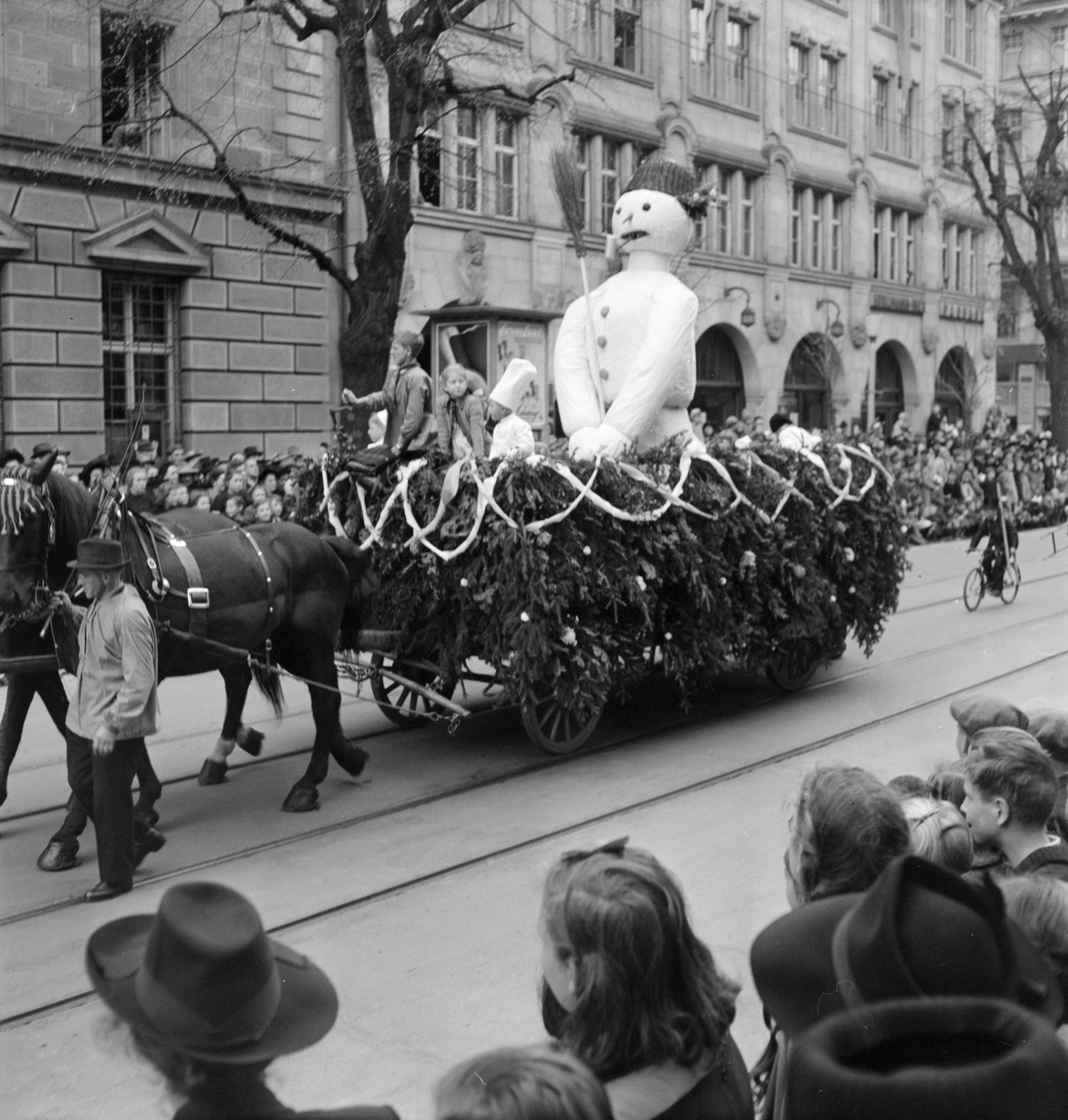
The parade featuring various guildsExternal link kicks off at 3pm. Around 3,500 guild members in costumes, 50 horse-drawn floats and 30 bands make their way through the city to Sechseläutenplatz. The procession – and the burning of the Böögg – attracts tens of thousands of spectators, including many politicians and other big names from the world of business, sport and culture. Hundreds of thousands of people also follow the drama from the safety of their television sets.
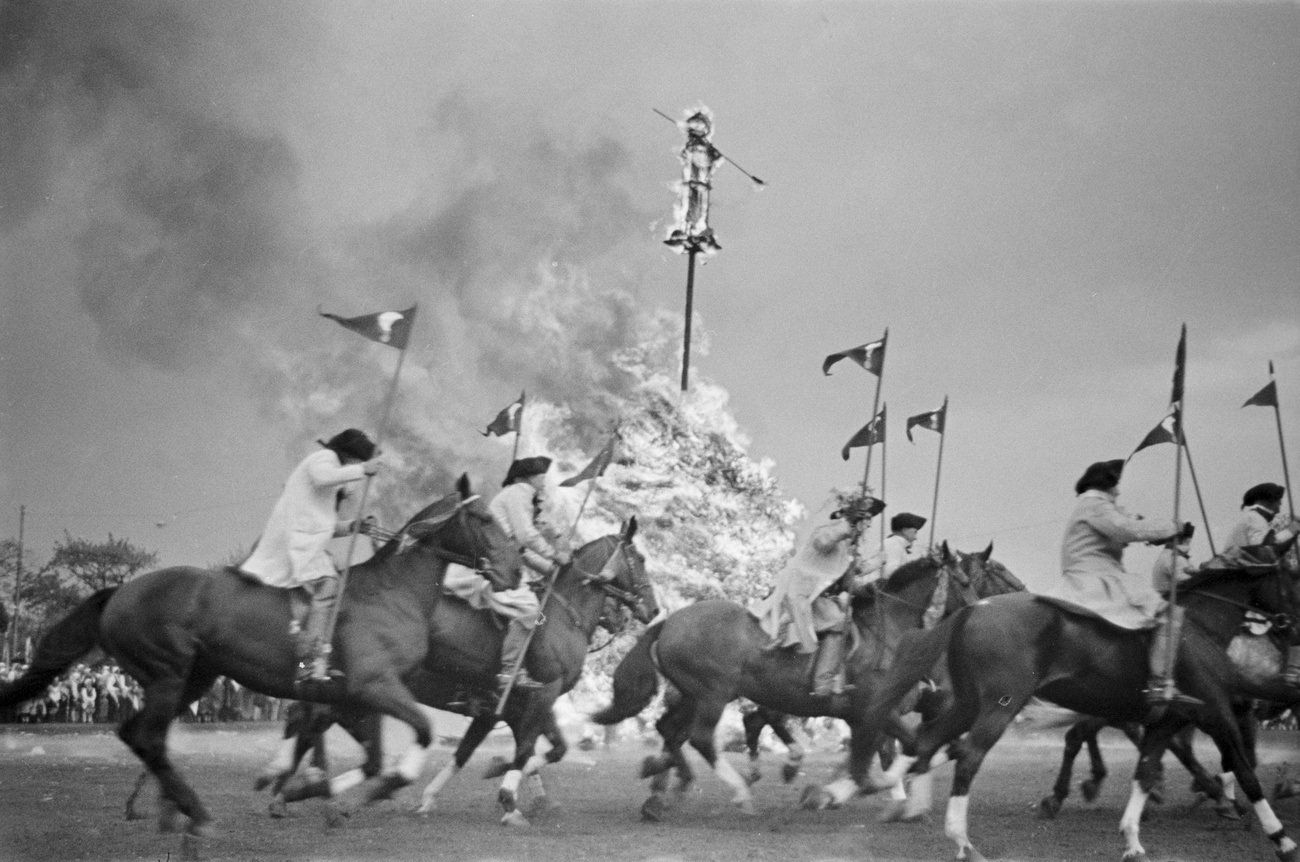
At 6pm, on the sixth stroke of the bells of the Grossmünster cathedral, the pyre beneath the Böögg, perched on a ten-metre throne, is lit. Horse-riders circle the burning snowman until the explosive finale. Groundhog Punxsutawney Phil (see box) might have inspired a Hollywood comedy, but the Böögg is hard to beat for drama.
Groundhog Day
Groundhog Day is arguably the most well-known weather-prediction tradition, observed regionally in the United States and Canada on February 2. It derives from the Pennsylvania Dutch superstition that if a groundhog emerges from its burrow on this day and sees its shadow, it will retreat to its den and winter will go on for six more weeks; if it doesn’t see its shadow, spring will arrive early. The ceremony held at Punxsutawney in western Pennsylvania, starring a semi-mythical groundhog named Punxsutawney Phil, has become the most frequently attended ceremony.
Bear shadows
Similar to Groundhog Day, people in Serbia, Romania and Hungary watch for bears emerging from hibernation on February 2 (or February 15 in Serbia). They reckon that if a bear sees its shadow, it will go back into its den and sleep for another 40 days, prolonging winter.
Woolly bear caterpillars
Every year thousands of people flock to a town in North Carolina to watch the US’s biggest woolly bear caterpillar race. The winner gets the honour of predicting the weather for the upcoming winter. Here’s a guideExternal link on how to “read a worm” (it involves the colour and pattern of the stripes).
Frogs in jars
A belief existed in the German-speaking world (including in Switzerland) that frogs could predict the weather. This grew from observing European tree frogs climb up vegetation in sunny weather, and led to frogs being kept inside jars equipped with a small ladder. The term Wetterfrosch (weather frog) has survived as a somewhat derogatory name for meteorologists, implying their predictions can’t be trusted.
Ants
Afar women in Ethiopia observe the behaviour of ants, specifically the Dakura “jump about” ant, to predict the coming rainy season. Women fetching water gather around the wells and scratch a ditch in front of an army of Dakura ants. If the ants go inside the ditch or cross the ditch, then it is considered that the next rainy season will be dry. However, if the ants avoid the ditches and rush to go roundabout without directly crossing or getting inside the ditches, this is an indicator of a good rainy season. As this paper explainsExternal link, the Afar community says the ants avoid the ditches because they have instinctively sensed rains or floods and are trying to avoid being washed away.
Back-up Bööggs
Not that things have always gone smoothly. In 1923 it rained so hard that the sodden Böögg didn’t burn.
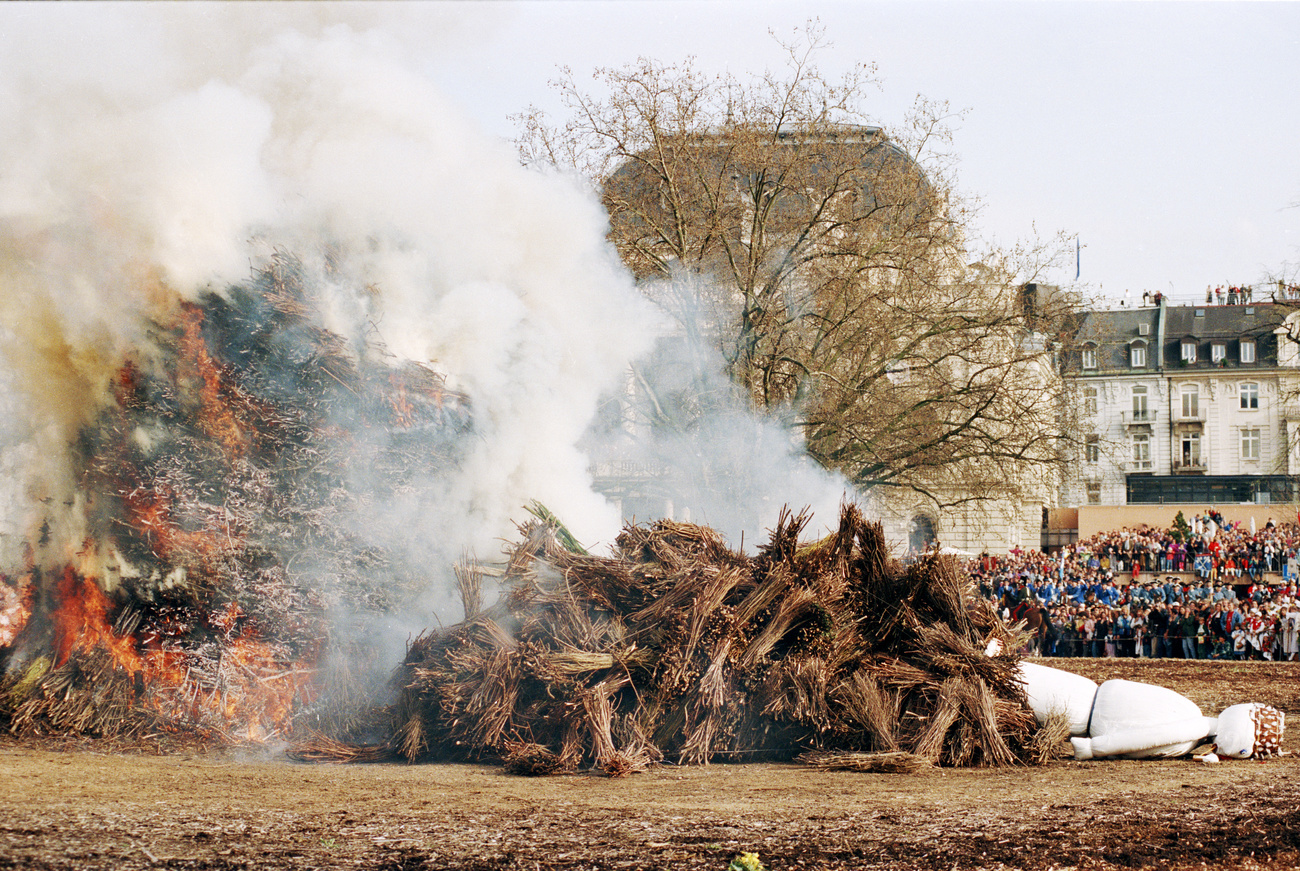
In 1941 Switzerland’s wartime farming policy meant the field was needed to grow crops, so the Böögg got a reprieve. He wasn’t so lucky the following year, although because the field was still being used to grow potatoes, the crowds had to keep their distance. In 1943 the field was still needed for food, so the Böögg was moved onto the dam in the port in Enge, where the following year he fell into Lake Zurich. He was fished out and his head was thrown into the fire. What a way to go.

Who would have thought a snowman could be political: in 2006 the Böögg was abducted by leftist “revolutionaries” a few days before the Sechseläuten. In a midnight raid they smashed a window of the garage where he was stored and left a chocolate Easter bunny and a hammer and sickle emblem in his place, saying the snowman “had had enough of putting its head on the line for capitalists”. Since then, several back-up Bööggs have been held in reserve, with the main one stored at a bank near Sechseläutenplatz.
In 2020 and 2021 the Sechseläuten parade was cancelled owing to Covid, returning as normal on April 25, 2022. While the Böögg had a year off in 2020, in 2021 the burning was held in a gorge, without an audience, in canton Uri. The event was broadcast live on television.
Then last year saw the “Böögg debacle” when strong winds forced the organisers, worried about stray sparks and embers, to abort just before ignition. “It could have resulted in a mass panic,” Felix Boller, president of the Zurich Guild Committee, said at the timeExternal link.
However, the Böögg didn’t get a year off: he was burnt two months later in Heiden, in the host canton of Appenzell Outer Rhodes. The exiled Böögg proved to be particularly resilient: while the pyre burnt relatively quickly despite the wet conditions, it took a while for the shoulders and head of the snowman to catch fire: his head exploded after 31:28 minutes, predicting a mediocre summer. And he wasn’t that wrong.
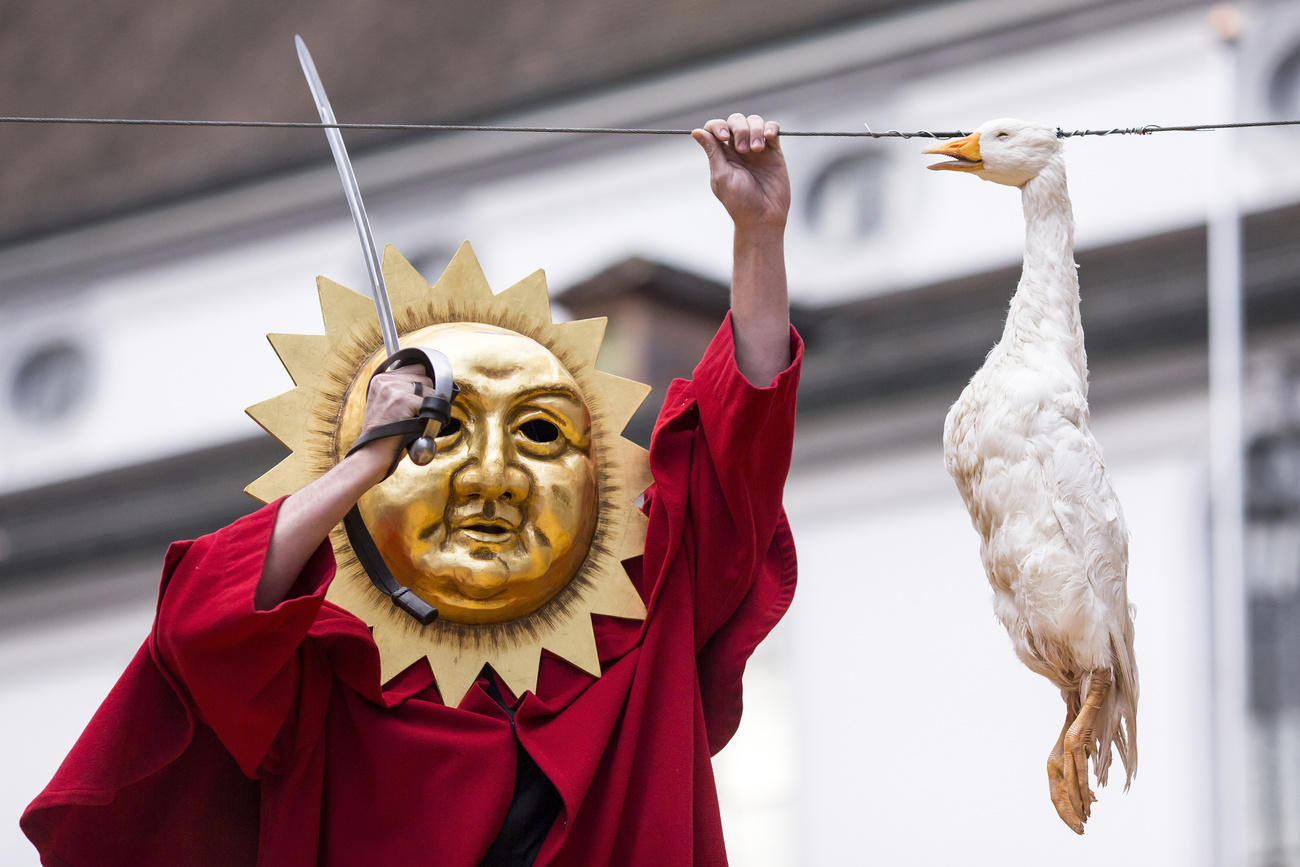
More
They do what? Five frankly bizarre Swiss traditions
Scientifically questionable
While the Böögg’s ability to predict the weather is erratic, he does score the odd hit.
“It’s noteworthy that, ahead of the hot summer of 2003, the Böögg had exploded after only five minutes and 42 seconds,” said the Federal Office of Meteorology and Climatology (MeteoSwiss)External link. “However, this was obviously pure coincidence. The Sechseläuten forecasts do not stand up to climatological scrutiny.”
The shortest time on record is 5:07 minutes in 1974 and the longest is exactly 57 minutes in 2023.

“Before the second-hottest summer of 2022, the Böögg only exploded after almost 40 minutes. Before the third- and fourth-hottest summers of 2018 and 2015, the burn time was between 20 and 21 minutes. In these three years, the Böögg was a poor forecaster. Even in 2019, with the fifth-hottest summer on record, it didn’t provide an accurate forecast, burning for just under 18 minutes.”
According to MeteoSwiss, it’s “not surprising” that the Böögg scores so poorly as a forecaster. “How is a burning snowman made of cotton wool supposed to have good predictive qualities?” it said.
“In reality, the burn time depends on the construction of the pyre, the humidity of the firewood and the weather on the day of the Sechseläuten. Last but not least, there is the all-important factor of how much fire accelerant is used,” it explained.
“Nevertheless, although the Böögg’s summer forecast cannot be scientifically supported, Zurich would certainly not be without its oracle.”
>> How the Böögg is made, in pictures:
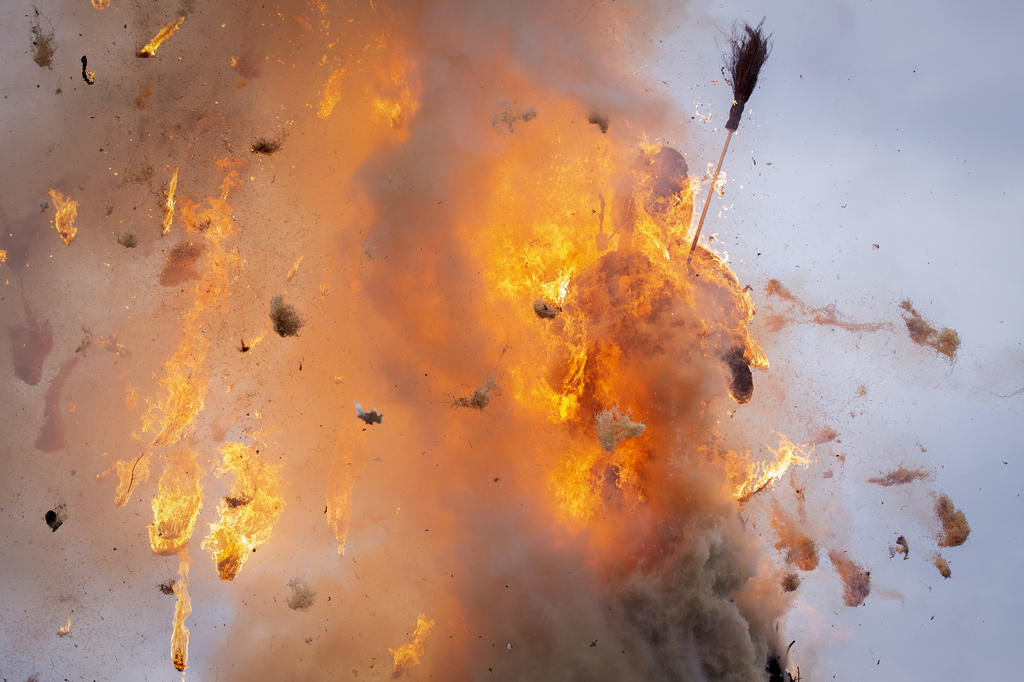
More
A psychic exploding snowman? Welcome to Sechseläuten
Edited by Samuel Jaberg/ds
More

In compliance with the JTI standards
More: SWI swissinfo.ch certified by the Journalism Trust Initiative






























You can find an overview of ongoing debates with our journalists here . Please join us!
If you want to start a conversation about a topic raised in this article or want to report factual errors, email us at english@swissinfo.ch.